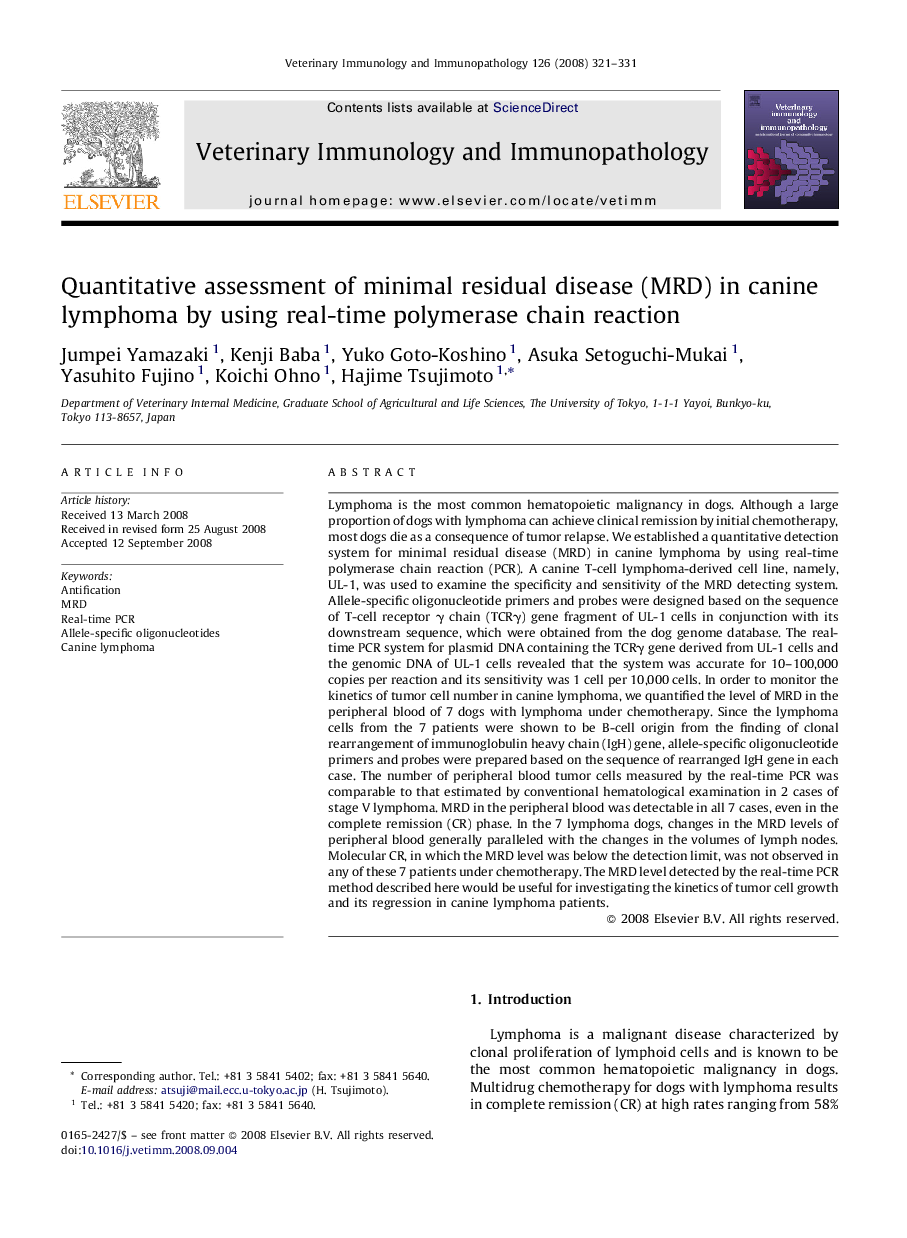| کد مقاله | کد نشریه | سال انتشار | مقاله انگلیسی | نسخه تمام متن |
|---|---|---|---|---|
| 2462966 | 1555093 | 2008 | 11 صفحه PDF | دانلود رایگان |

Lymphoma is the most common hematopoietic malignancy in dogs. Although a large proportion of dogs with lymphoma can achieve clinical remission by initial chemotherapy, most dogs die as a consequence of tumor relapse. We established a quantitative detection system for minimal residual disease (MRD) in canine lymphoma by using real-time polymerase chain reaction (PCR). A canine T-cell lymphoma-derived cell line, namely, UL-1, was used to examine the specificity and sensitivity of the MRD detecting system. Allele-specific oligonucleotide primers and probes were designed based on the sequence of T-cell receptor γ chain (TCRγ) gene fragment of UL-1 cells in conjunction with its downstream sequence, which were obtained from the dog genome database. The real-time PCR system for plasmid DNA containing the TCRγ gene derived from UL-1 cells and the genomic DNA of UL-1 cells revealed that the system was accurate for 10–100,000 copies per reaction and its sensitivity was 1 cell per 10,000 cells. In order to monitor the kinetics of tumor cell number in canine lymphoma, we quantified the level of MRD in the peripheral blood of 7 dogs with lymphoma under chemotherapy. Since the lymphoma cells from the 7 patients were shown to be B-cell origin from the finding of clonal rearrangement of immunoglobulin heavy chain (IgH) gene, allele-specific oligonucleotide primers and probes were prepared based on the sequence of rearranged IgH gene in each case. The number of peripheral blood tumor cells measured by the real-time PCR was comparable to that estimated by conventional hematological examination in 2 cases of stage V lymphoma. MRD in the peripheral blood was detectable in all 7 cases, even in the complete remission (CR) phase. In the 7 lymphoma dogs, changes in the MRD levels of peripheral blood generally paralleled with the changes in the volumes of lymph nodes. Molecular CR, in which the MRD level was below the detection limit, was not observed in any of these 7 patients under chemotherapy. The MRD level detected by the real-time PCR method described here would be useful for investigating the kinetics of tumor cell growth and its regression in canine lymphoma patients.
Journal: Veterinary Immunology and Immunopathology - Volume 126, Issues 3–4, 15 December 2008, Pages 321–331